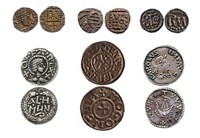Advertisement
Grab your lab coat. Let's get started
Welcome!
Welcome!
Create an account below to get 6 C&EN articles per month, receive newsletters and more - all free.
It seems this is your first time logging in online. Please enter the following information to continue.
As an ACS member you automatically get access to this site. All we need is few more details to create your reading experience.
Not you? Sign in with a different account.
Not you? Sign in with a different account.
ERROR 1
ERROR 1
ERROR 2
ERROR 2
ERROR 2
ERROR 2
ERROR 2
Password and Confirm password must match.
If you have an ACS member number, please enter it here so we can link this account to your membership. (optional)
ERROR 2
ACS values your privacy. By submitting your information, you are gaining access to C&EN and subscribing to our weekly newsletter. We use the information you provide to make your reading experience better, and we will never sell your data to third party members.
Analytical Chemistry
Illuminating Illuminations
Raman spectroscopy reveals the pigment palettes used to illustrate Gutenberg Bibles
by CELIA HENRY
June 27, 2005
| A version of this story appeared in
Volume 83, Issue 26

The Gutenberg Bibles hold an exalted place in publishing history as the earliest examples of books that were printed rather than hand copied. The printing of the Gutenberg Bibles was completed in 1455. Of approximately 180 copies, substantial portions of 48 survive in collections around the world.
"In view of the enormous amount of art-historical and other research carried out on many Gutenberg Bibles over the past six centuries, it is amazing that no attempts have been made previously to identify the pigments used," says Robin J. H. Clark, a chemistry professor at University College London.
Clark and his coworkers have rectified that situation. They used Raman spectroscopy to examine the illuminations (decorations) and inks in a copy of the Gutenberg Bible held at the British Library, known as the King George III copy, and compared its pigment palette with those of six other copies held elsewhere in England, France, and Germany (Anal. Chem. 2005, 77, 3611). Previous studies of the bibles have focused on the composition of the printing inks and paper.
After the bibles were printed, many parts, including the headlines, rubrics, and major capitals, needed to be added by hand. In addition, some of the copies were richly illuminated with elaborate borders and other illustrations. Because these additions varied, they are believed to have been performed locally to the buyer's specifications rather than coordinated by Johann Gutenberg's workshop.
The pigments used for the hand-drawn portions of the bibles are a potential source of information about the books and their time, including possible trade routes and artists' preferences. A standard model book offered guidance in terms of style and pigments, but the diversity in the finished products suggests that the guidelines weren't always followed.
"We wanted to determine how diverse the palette of different Gutenberg Bibles might be, given that they were not all illuminated in the same city or at the same date," says lead author Tracey D. Chaplin, a postdoc in Clark's lab.
The analysis is part of a larger project at the British Library to study illuminated "incunabula" (15th-century printed materials) and the technical and artistic developments that occurred as printing began to supersede handwritten manuscripts. "At the time the bibles were printed, the intention was that these early printed books should physically resemble the traditional book form, the handwritten manuscript," says David Jacobs, a senior conservation officer at the British Library in London and one of Clark's collaborators.

Raman spectroscopy is particularly well-suited for nondestructive analysis of the bibles, compared with other methods such as X-ray fluorescence or diffraction, because it provides molecular information rather than just elemental analysis. "The large size of the bible itself can put limits on instrument geometry, as the book cannot be opened completely flat," Chaplin says. The use of fiber-optic cables for the spectroscopic analysis makes the awkward size and shape of the book less of a problem because samples need not be taken from the books. In any case, the team received permission to remove small samples from the gutters and margins of copies held at other places for analysis back at the British Library.
The spectroscopic results showed that the palettes of all seven copies are similar and "rather limited," Chaplin says. The palette for the King George III copy contains nine pigments (plus gold leaf), three of which were found in all copies examined and two others that were found in six of the copies. The other copies also contain pigments that weren't found in the King George III copy.
The copy housed at the Niedersächsische Staats und Universitätsbibliothek, in Göttingen, Germany, has the most extensive palette of the seven copies examined, with 16 pigment-related materials identified. That copy was also printed on vellum--a more expensive material--rather than paper. Vellum is not necessarily an indication of luxury, however, as it was sometimes chosen for its durability.
For modern purposes, knowing which pigments were used is critical for conservation efforts, Clark says. "Use of incorrect pigments, even if they are of the correct color, could destroy any work of art through adverse chemical reactions. It is vitally important that these critical facts are brought to the attention of the art world as well as to those in science," he says. "Pigment degradations--common with lead and copper pigments--are simply chemical reactions, which need to be recognized for what they are and studied as such."







Join the conversation
Contact the reporter
Submit a Letter to the Editor for publication
Engage with us on Twitter